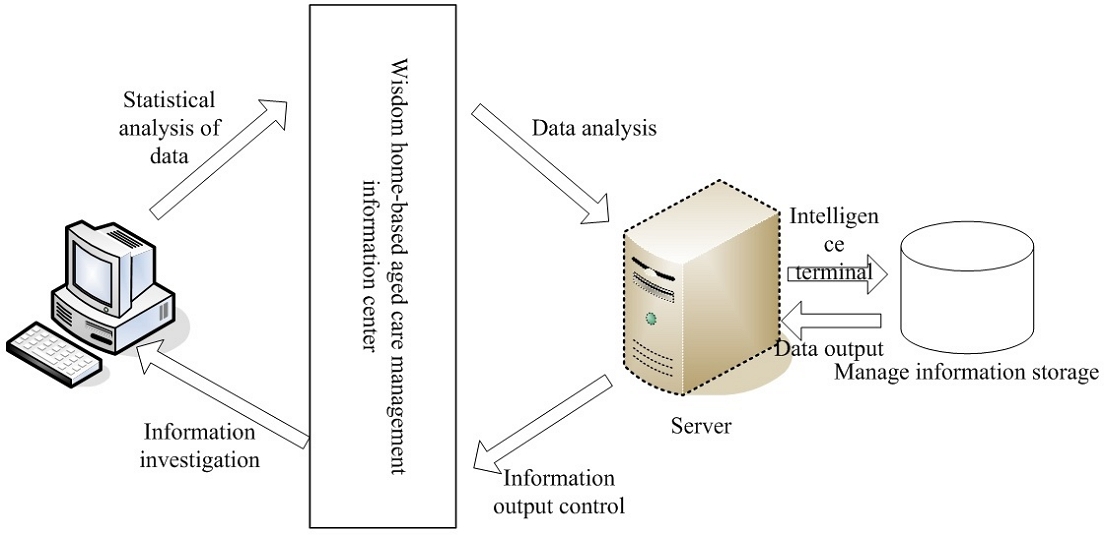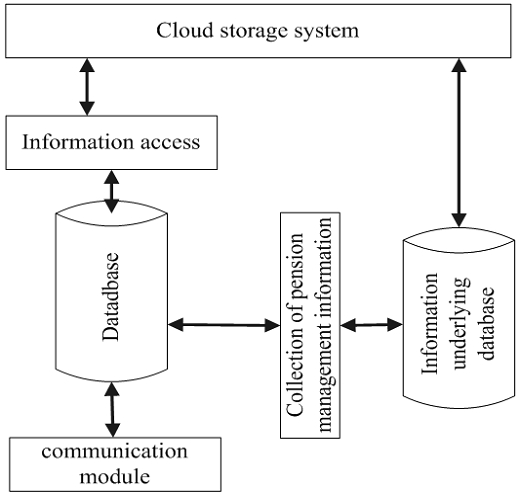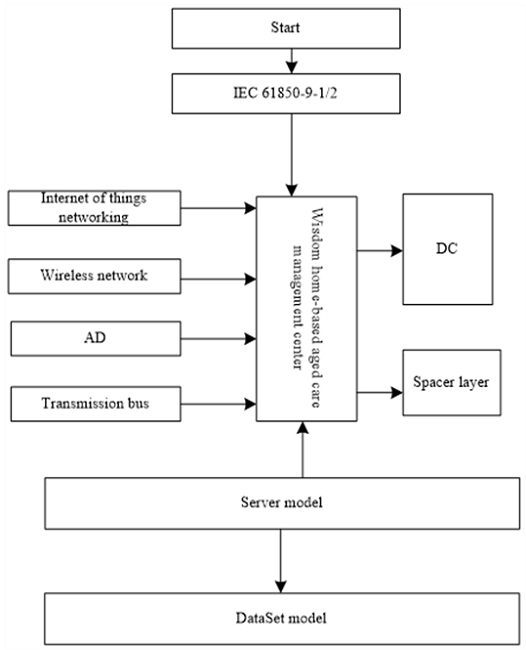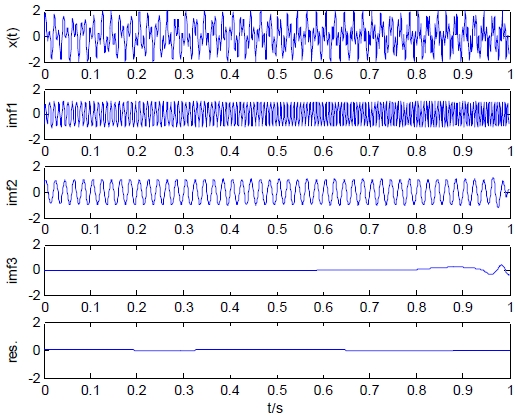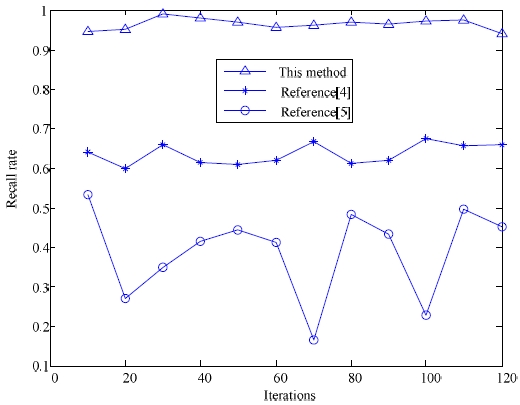
Design and Implementation of Home Care Management Information System in Smart Community Based on Big Data
1PhD. Course, Department of Smart Experience Design, Kookmin University, Seoul, Korea2Professor, College of Communication, Qingdao University of Science and Technology
3Professor, Department of Smart Experience Design, Kookmin University, Seoul, Korea
2칭다오과기대학교 커뮤니케이션대학 교수
3국민대학교 테크노디자인전문대학원 스마트경험디자인학과 교수
Copyright ⓒ 2022 The Digital Contents Society
This is an Open Access article distributed under the terms of the Creative Commons Attribution Non-CommercialLicense(http://creativecommons.org/licenses/by-nc/3.0/) which permits unrestricted non-commercial use, distribution, and reproduction in any medium, provided the original work is properly cited.

Abstract
In order to improve the management ability of home care, a design scheme of home care management information system for smart community based on big data fusion and embedded control is proposed. The simulation results show that the method has better output reliability and data fusion clustering ability.
초록
홈케어 양로 관리 능력 향상을 위해 빅데이터 융합과 내장형 제어를 기반으로 하는 스마트 커뮤니티용 홈케어 양로 관리 정보 시스템의 디자인 방안을 제안한다. 시뮬레이션 결과, 더 나은 신뢰성과 데이터 융합 클러스터링 능력을 가지고 있음을 보여준다.
Keywords:
Big Data, Smart Community, Home Care Management, Information System, Design키워드:
빅데이터, 스마트 커뮤니티, 홈케어 양로 관리, 정보 시스템, 디자인Ⅰ. Introduction
With the improvement of information management level of smart community home care, people pay attention to the optimization design of smart community home care information management system under the mobile Internet environment. It is necessary to build a smart community home care management information system, combine information management with adaptive scheduling methods, optimize the system design of smart community home care management, adopt big data analysis technology, establish a smart community home care management platform, and realize smart community home care management through cloud computing resource scheduling[1]. It is of great significance to study the optimal design of the management information system of home care for the aged in smart communities in promoting the informatization construction of community care for the aged [2].
The design of the intelligent community home care management information system is based on the comprehensive resource scheduling and feature fusion of the intelligent community home care management information, and a comprehensive scheduling model of the intelligent community home care management system is constructed. Combined with sample analysis and information fusion clustering technology, through adaptive resource scheduling and Internet of Things control, the design of an intelligent community home care management information system is realized[3]. In the traditional method, the smart community home-based care management mainly establishes the smart community home-based care management model under the cloud computing environment through the sample statistical analysis method, the resource scheduling method and the fuzzy PID control method, and then realizes the smart community home-based care information system through fuzzy comprehensive information decision-making. Design [4]. However, there are problems such as poor adaptability and poor output stability in the traditional smart community home care information system design method. In view of the above problems, this paper proposes a design scheme of a smart community home care management information system based on big data fusion and embedded control. First, through the methods of IoT perception information perception and topology information collection, multi-threaded observation and statistical information sampling of home care management in smart communities are realized. Then, by adopting technologies such as the Internet of Things, online perception, and data fusion clustering, information fusion and resource scheduling in the process of home-based care management in smart communities are realized. The multi-threaded observation and statistical information features of home care management information in smart communities are extracted, and big data clustering and embedded intelligent control are used to realize home care management and information scheduling in smart communities. Finally, the simulation test analysis shows that this method has superior performance in improving the management ability of home-based elderly care in smart communities [5].
Therefore, compared with previous studies, this paper has new features in the design of the smart community home care management information system, whether it is in the adaptability of the smart community home care information system design method, the output stability, or the logic of the system design. In all aspects, it is much better than the traditional smart community home care information system design method.
Ⅱ. General framework and big data analysis of smart home care management information system in community
2-1 Overall framework of home care management information system in smart communities
In order to optimize the design of the management information system for home-based aged care in smart communities, the big data analysis model of home-based aged care management in smart communities is first constructed. Based on the probabilistic model analysis method, regular parameters and probabilistic model analysis methods are adopted to control the topology of Internet of Things nodes, and the underlying database is constructed as the data processing center module of home-based aged care management in smart communities[6]. The overall structure model of home-based aged care management in smart communities is shown in Figure 1.
In the general structure model of smart community home care management shown in Figure 1, the operation and maintenance parameter fusion model of smart community home care management is constructed based on Bayesian estimation of probability model. In the multimedia scene, in the adaptive scheduling of smart community home care management information under intelligent operation and maintenance[7], the smart community home care management method based on big data fusion and embedded control, The merged set of home care management information of smart communities in each dimension is A1⋃A2⋃,⋯,⋃Ak = A.
According to the information sharing level of home care management information of smart communities under intelligent operation and maintenance, under the constraint of high-dimensional auxiliary information, the linear regression analysis model of home care management of smart communities is obtained:
| 1mp∑i=0aimiq/2∑k=-q/2bkcik=a1 | (1) |
Based on the basic model evaluation index analysis, the association rules scheduling set of home care management in smart communities is obtained:
| (2) |
Set R(t) as the real probability space (Ω, F, f(x), P), the characteristic quantity of association rules is established, and the fusion model of the information distribution structure of home care for the elderly in smart communities is constructed according to the experience and the convergence of the model. On the specific division of the rule space, the test statistical analysis model of each data point in the home care management information data set X of smart communities is obtained as follows:
| {f:Rn×Rn×Sg:Rn×Rn×S→Rn×dh:Rn×Rn×S | (3) |
Select k data points from the smart community home care management data set X as the relevant constraint parameter set, and the random distribution characteristic quantity of the smart community home care management data set satisfies:
| h:Rn×Rn×Sδ(t):[0,T]→Rv(dt,du)=v(dt,du)-π(du)dt | (4) |
In order to avoid falling into the local optimal solution, the fuzzy comprehensive scheduling method is adopted to build a big data analysis model of home care management in smart communities, so as to improve the ability of data reliability fusion analysis[8].
2-2 Big Data analysis of smart home care management in community
Using sensing information perception and Internet of Things topology information collection methods to realize multi-thread observation and statistical information sampling of smart community home care management, combining with big data fusion scheduling model to realize information management and multi-thread observation and statistical information fusion of smart community home care management, and adopting ZigBee networking protocol[9], a data set average statistical analysis model of smart community home care management information management is constructed, which is expressed as:
| E∫|f(z(t),Z(t1),r(s))-f(z(t),Z(t1)|ds<C∆ | (5) |
| (6) |
Calculate the European clustering of data points P and X, and adopt the fuzzy centroid clustering analysis method to obtain the linear combination feature distribution model of home care management in smart communities, which is expressed as:
| (7) |
Wherein, ΔB = B(tn-1)+B(t1); I[u] the initial centroid of K-means is determined according to the data dimensions assigned to each processor of the data points, and the multi-thread observation and statistical information clustering output of the management information of home care for the aged in smart communities are obtained as follows:
| (8) |
| (9) |
Combining feature clustering and fusion technology, the processed home care information is scheduled by association rules, and the big data processing structure model of home care management in smart communities is obtained as shown in Figure 2.
Ⅲ. Optimal design of smart home care management in community
3-1 Data mining and operation and maintenance analysis
Combine the big data fusion scheduling model to realize the information management and multi-thread observation and statistical information fusion of the home care management in smart communities, extract the autocorrelation characteristic quantity of the home care management information in smart communities, and adopt the technologies of Internet of Things, online perception, data fusion clustering, etc[10]. to get the stable point of the information distribution of home care management in smart communities, where, u∈ C(0, 1) ∩ L(0, 1) α>0. Under the constraint of closed frequent items, the linear combination binary programming model of panel data of home care management information in smart communities is as follows:
| (10) |
Combining the sensing identification results of different nodes, the integrated characteristic quantity associated with the home care management information of smart community can be met in the Agent mode. Using cloud design and fuzzy information clustering method, the multidimensional parameter statistical sequence x1,x2,⋯xn ∈ Cm of the home care management information management of smart community in the operation and maintenance mode is obtained as , and the fuzzy information mapping output is as follows:
| (11) |
Taking Td as a management unit, a load balancing scheduling model [13] based on multi-thread observation and statistical information of home care management in smart communities is constructed, and the entropy of multi-source characteristic distribution of home care management in smart communities is satisfied:
| (12) |
Wherein,
 is mutual information entropy, and Lj is the disposable income set of home care management information in smart communities. According to the above analysis, the technologies of big data mining and operation and maintenance analysis are adopted to realize multi-thread observation and statistical information integrated processing of the information association of home care management in smart communities[11].
is mutual information entropy, and Lj is the disposable income set of home care management information in smart communities. According to the above analysis, the technologies of big data mining and operation and maintenance analysis are adopted to realize multi-thread observation and statistical information integrated processing of the information association of home care management in smart communities[11].
3-2 Scheduling algorithm of smart home care management in community
Combined with the big data fusion scheduling model, the information management and multi-thread observation and statistical information fusion of home care management in smart communities are realized, and the comprehensive management of home care management information in smart communities is carried out, and the relevant parameters are met:
| (13) |
By adopting the cloud combination service mode, the state set {Wfinal} of intelligent community home care management information management and comprehensive scheduling under intelligent operation and maintenance is obtained. The prior distribution set of intelligent community home care management information management is:
| (14) |
| (15) |
| (16) |
The association rules of the management information of smart home care for the aged in the community are extracted, in which:
| (17) |
A spatial clustering model is constructed to carry out comprehensive management and scheduling of home care management information in smart communities[12].
3-3 Smart community home care management optimization design
Combining the big data fusion scheduling model to realize the information management and multi-thread observation and statistical information fusion of the smart community home care management, extracting the autocorrelation characteristic quantity of the smart community home care management information, and adopting the Internet of Things, online perception, data fusion clustering and other technologies to obtain the fuzzy information set of the smart community home care management. Similarly ui ∈ Rm, the fuzzy information transfer function is obtained by C-means clustering the smart community home care management information, and using the matching data analysis method:
| (18) |
On the basis of three-dimensional spectrum reconstruction, a multi-source statistical analysis model of home care management in smart communities is established, and the fuzzy statistical probability density function is obtained:
| (19) |
To sum up, the reliability random distribution sequence of multi-thread observation and statistical information of smart community home care management is constructed, and the multi-thread observation and statistical information features of smart community home care management information are extracted, and the fuzzy state equation of smart community home care management is obtained by parallel task mining as N(z*) = N(z). The method of multi-dimensional information entropy fusion is used, the output results of multi-thread observation and statistical information fusion of home care management in smart communities are as follows:
| (20) |
| (21) |
Wherein, i=16, 17, ⋯ 63, to sum up, big data clustering and embedded intelligent control are adopted to realize home care management and information scheduling in smart communities.
Ⅳ. System software development and design
In the LOG-CONTROL-BLOCK model, a systematic data loading and recording model is established. Through visual guidance technology and image analysis and processing technology, the standardized IEC 61850 standard control protocol is adopted to realize the management control and serial data processing of smart community home care, and the intelligent visual guidance model is constructed. In the ACSI independent terminal of smart community home care management, combined with the single chip microcomputer design, the intelligent community home care management is realized, and the IEC 61850-9-1/2 protocol is adopted to realize the bottom communication of the network. Based on the above analysis, the network structure and functional module structure of the system are shown in Figures 3.
In the integration layer, data feature analysis and network control are realized through AD module and I/O data output module, physical data integration is realized in the data layer, and information detection and scheduling of home care management in smart communities are realized by cloud integration. In summary, the software and hardware integration diagram of the system is shown in Figure 4.
V. Simulation analysis
In order to verify the application performance of this method in the smart community home care management, an experimental test analysis was carried out. Based on Matlab/Simulink simulation software, a data processing platform of smart community home care management was built. The number of samples of smart community home care management information was 2000, the correlation distribution set was 120, the iteration step of data fusion was 100, and the statistical period of smart community home care management information was 1.38. According to the above parameters, the smart community home care management was carried out, and the smart community home care management was obtained.
The analysis of Figure 5 shows that this method can effectively realize the home care management for the aged in smart communities, thereby realizing multi-thread observation and statistical information integration of the management information of home care for the aged in smart communities, and testing the real-time performance of end-to-end monitoring data transmission of the system. Test the output of the information system, as shown in Figure 6.
According to the analysis of Figure 6, the information fusion performance of this method for home care management in smart communities is better. Taking the time delay as the test identification, the reliability of the system is tested. The shorter the time delay, the better the data transmission effect. Table 1 shows the end-to-end data communication delay comparison of the three methods in real-time communication.
From the analysis of Table 1, it is known that the data fusion level of the smart community home care management and multi-thread observation and statistical information integration by this method is good, and the time delay is small. The recall rate of the smart community home care management is tested, and the comparison results are shown in Figure 7.
According to the analysis of Figure 7, the output reliability of smart community home care management by this method is good, the data fusion clustering ability is strong, and the recall rate is high.
Ⅵ. Conclusion
In this paper, using big data analysis technology, a smart community home care management platform is established, and the smart community home care management is realized through cloud computing resource scheduling. This paper puts forward a design scheme of home-based aged care management information system in smart community based on big data fusion and embedded control. The underlying database is constructed as the data processing center module of home care for the elderly in smart communities, and the information management and multi-thread observation and statistical information fusion of home care for the elderly in smart communities are realized by combining the big data fusion scheduling model. The technologies of Internet of Things, online perception and data fusion clustering are adopted to construct the spatial clustering model, and the comprehensive management scheduling of home care management information in smart communities is carried out. The research shows that this method has good output reliability, strong data fusion and clustering ability, high recall rate, and good application value.
Acknowledgments
This work was supported by WST2021020.
References
- J. Y. Gan, Y. K. Zhai, and L. Xiang, et al., “Spatial-temporal texture cascaded feature method for face liveness detection”, Pattern Recognition and Artificial Intelligence, 32(2), pp.117-123,2019.
-
J. Redmon, S. Divvala, and R. Girshick, et al. “You only look once: unified, real-time object detection”, 2016 IEEE Conference on Computer Vision and Pattern Recognition, pp.779-788,2016.
[https://doi.org/10.1109/CVPR.2016.91]

- Y. P. Wang, Y. Yang, Y. Yao, “Single shot multibox detector for ships detection in inland waterway”, Journal of Harbin Engineering University, 40(7), pp.1258-1262, 2019.
- W. H. Liu, G. S. Liu, X. W. Chen, and X. R. Li, “Robust texture representation by combining differential feature and Haar wavelet decomposition”, Journal of Computer Applications, 40(9), pp.2728-2736, 2020.
-
F. B. Li, P. Shi, and L. Wu, et al. “Quantized control design for cognitive radio networks modeled as nonlinear semi-Markovian jump systems”, IEEE Transactions on Industrial Electronics, 62(4), pp.2330-2340, 2015.
[https://doi.org/10.1109/TIE.2014.2351379]

- X. W. HE, J. J. XU, B. Wang, H. Wu, and B. W. Zhang, “Research on Cloud Computing Resource Load Forecasting Based on GRU-LSTM Combination Model”, Computer Engineering, 48(5), pp.11-17, p.34, 2022.
- G. Su, J. Z. Bao, X. Wang, and L. D. Wang, “Interpretable ordered clustering method and its application analysis”, Journal of Computer Applications, 42(2), pp.457-462, 2022.
- Y. H. Li, C. X. Du, Y. Y. Yang, and X. Y. Li, “Feature selection algorithm for imbalanced data based on pseudo-label consistency”, Journal of Computer Applications, 42(2), pp.475-484, 2022.
- X. H. Jing, G. D. Sun, S. B. He, and Y. Liao, “Time-varying channel estimation method based on sliding window filtering and polynomial fitting”, Journal of Computer Applications, 41(9), pp.2699-2704, 2021.
-
A. H. Sodhro, M. S. Obaidat, and Q. H. Abbasi, et al. “Quality of service optimization in an IoT-driven intelligent transportation system”, IEEE Wireless Communications, 26(6), pp.10-17, 2019.
[https://doi.org/10.1109/MWC.001.1900085]

- K. Li, J. Li, “Structure-fuzzy multi-class support vector machine algorithm based on pinball loss”, Journal of Computer Applications, 41(11), pp.3104-3112, 2021.
- X. Q. Zhang, C. X. Wang, Y. Lyu, Y. J. Lin, “Hierarchical classification online streaming feature selection algorithm based on Relief Falgorithm”, Journal of Computer Applications, 42(3), pp.688-694, 2022.
저자소개

2010년 6월 : 우한공업학원 예술 디자인 전공
2013년 12월 : 우한 대학 소프트웨어 공학 전공 (디지털 미디어 아트 방향)
2021년 3월~현 재: 한국 국민대학교 테크노디자인 전문대학원, 스마트 경험디자인학과 (박사과정)
E-Mai l:Jfy1515418384@163.com

1997년 2월 : 성균관대학교 한국철학과 (학사)
2000년 6월 : 우한대학교 미학과 (석사)
2004년 12월 : 우한대학교 미학과 (박사)
2005년 7월~현 재: 칭다오과기대학교 커뮤니케이션대학 교수
※관심분야 : 사용자 경험 전략, 서비스 디자인, 디자인 미학
E-Mail : wansok2000@hanmail.net

1991년 2월 : 한국과학기술원 산업공학과 (공학사)
1993년 2월 : 한국과학기술원 인간공학 (공학석사)
1999년 8월 : 한국과학기술원 인간공학 (공학박사)
2006년 9월~현 재: 국민대학교 테크노디자인전문대학원 교수
※관심분야 : 인터랙션 디자인, 사용자 경험(UX)
E-Mail : peterpan@kookmin.ac.kr
